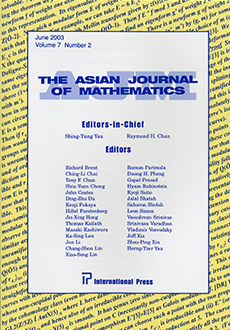Abstract
Minimal affine Kac-Moody groups act on affine twin buildings by isometries. However there is no way to extend this action to any completion of the Kac-Moody groups. To remedy this, we introduce in this paper affine twin cities, a new class of objects, whose elements behave like completions of twin buildings. Twin cities are defined as special arrays of affine buildings connected among themselves by twinnings. Corresponding to completed affine Kac-Moody groups they are characterized by the type of the affine buildings and by some kind of "regularity conditions" describing the completion. The isometry groups of affine twin cities are (completions of) affine Kac-Moody groups. We study applications of cities in infinite dimensional differential geometry by proving infinite dimensional versions of classical differential geometric results: For example, we show that points in an isoparametric submanifold in a Hilbert space correspond to all chambers in a city. In two sequels we will describe the theory of twin cities for formal completions.
Citation
Walter Freyn. "Kac-Moody groups, infinite dimensional differential geometry and cities." Asian J. Math. 16 (4) 607 - 636, December 2012.
Information





